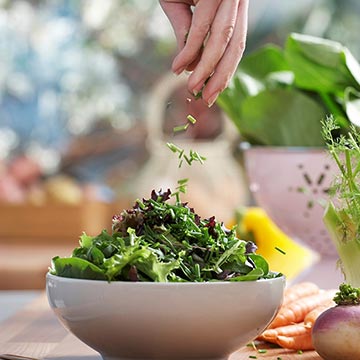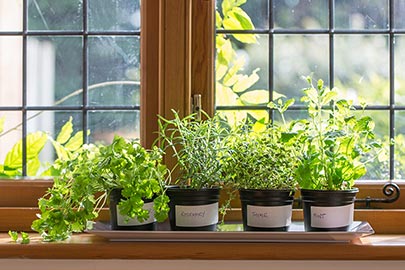
There is nothing quite like having fresh herbs to add to your meal, and this is particularly true in the middle of winter. Fresh thyme, sage and parsley are an important part of seasoning for many cold weather casseroles and meals and as any cook knows, fresh herbs have far more flavor than the dried herbs from your cupboard.
The biggest problem with growing herbs indoors in winter is the amount of sun exposure because most herbs really need full sun – about 12 hours of direct sun each day - so some additional light is needed. They also need warmth which makes a kitchen windowsill a great place to grow them.

Start by deciding which herbs you would use in winter and keep your list to just 3 or 4 herbs unless you plan on using multiple windowsills. Some herbs like basil and cilantro grow quickly from seed and these can be sprinkled onto the surface of the potting mix in the container. Thyme, chives and oregano are perennials which take a while to germinate and it is worth picking these herb plants up from the store (often found near the fresh vegetables in better supermarkets) or bring them in from the garden. If you soil has not frozen, you will still be able to dig a small piece of thyme up from the garden and put into a container for growing indoors. Chives can also be grown indoors and although it grows quickly from seed, this too can be dug from outside and put into a container. Mint, which you should always grow in a container, can also be successful on the windowsill.
Assemble all your herbs on the windowsill and wait for them to show some active growth. At this point it is worth giving the herbs a dose of fertilizer. When the herbs show signs of good growth, you can harvest them just as you would outdoors. There will be plenty to add flavor your winter meals until your outdoor herb garden is in full production again.
by Kate Copsey, Garden Writer, Author